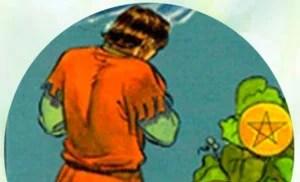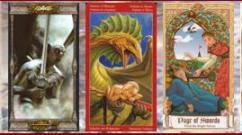Main groups of dinosaurs? History of dinosaurs. Interesting facts about dinosaurs
About 230 million years ago, the first dinosaurs evolved from a population of archosaurs (Archosauria), which shared the planet with many other reptiles, including the bestial reptiles - therapsids (Therapsida) and pelycosaurs (Pelycosauria). As a distinct group, dinosaurs have been identified by a set of (mostly obscure) anatomical features, but the main thing that simplifies their identification and distinguishes them from archosaurs is their bipedal or quadrupedal upright posture, as evidenced by the shape and location of the hip and tibia bones. See also: " " and " "
As with all such evolutionary transitions, it is impossible to determine the exact moment when the first dinosaur appeared on Earth. For example, the bipedal archosaur Marasuchus (Marasuchus) was perfect for the role of an early dinosaur, and Saltopus lived with the dinosaurs (S. elginensis) and procompsognathus (P. triassicus) during the transition between these two forms of life.
Newly discovered genus of archosaurs - Asilisaurus (Asilisaurus), can move roots family tree dinosaurs until 240 million years ago. There are also controversial tracks of the first dinosaurs in Europe, dating back 250 million years!
It is important to keep in mind that archosaurs did not “disappear” from the face of the Earth after becoming dinosaurs. They continued to live side by side with their eventual descendants for the remainder of the Triassic period. And just to confuse us completely, around the same time, other populations of archosaurs began to evolve into the first pterosaurs (Pterosauria) and prehistoric crocodiles. For 20 million years, during the Late Triassic, the landscapes of South America were rife with similar-looking archosaurs, pterosaurs, ancient crocodiles and early dinosaurs.
South America - Land of the First Dinosaurs
The earliest dinosaurs lived in the region of the supercontinent Pangea, corresponding to the territory of modern South America. Until recently, the most famous of these creatures were the relatively large Herrerasaurus (about 200 kg) and the medium-sized Staurikosaurus (about 35 kg), which lived about 230 million years ago. But now, some of the attention has shifted to Eoraptor (Eoraptor lunensis), discovered in 1991, a small (about 10 kg) dinosaur.
A recent discovery could revolutionize our understanding of the South American origins of the first dinosaurs. In December 2012, paleontologists announced the discovery of Nyasasaurus (Nyasasaurus), who lived in the Pangea region corresponding to modern-day Tanzania, Africa. Amazing! Fossil remains of this dinosaur are 243 million years old, which is approximately 10 million years earlier than the first South American dinosaurs. However, it is possible that Nyasasaurus and its relatives represented a short-lived offshoot from the family tree of early dinosaurs, or were technically archosaurs rather than dinosaurs.
These early dinosaurs gave rise to a hardy group of reptiles that quickly (at least in evolutionary terms) spread to other continents. The first dinosaurs quickly migrated to the regions of Pangea, corresponding to North America (a striking example is Coelophysis (Coelophysis), thousands of fossil remains of which were discovered in Phantom Ranch, New Mexico, USA, as well as the recently discovered tawa (Tawa), which are cited as evidence of the South American origin of dinosaurs. Small to medium-sized carnivorous dinosaurs, e.g. , soon made their way to the eastern part North America, and then further to Africa and Eurasia.
Specialization of early dinosaurs
The first dinosaurs coexisted on equal terms with archosaurs, crocodiles and pterosaurs. If you were to travel back in time to the end of the Triassic period, you would never guess that these reptiles were superior to all others. Everything changed with the mysterious Triassic-Jurassic, which wiped out most archosaurs and therapsids. No one knows exactly why dinosaurs survived, but it may have something to do with walking upright or having a more complex lung structure.
By the beginning of the Jurassic period, dinosaurs began to diversify the ecological niches left behind by their extinct counterparts. Split between lizards mi (Saurischia) and ornithischians (Ornithischia) dinosaurs occurred at the end of the Triassic period. Most of the earliest dinosaurs were saurischians, such as sauropodomorphs (Sauropodomorpha) that evolved into bipedal herbivorous prosauropods (Prosauropoda) in the early Jurassic period, as well as larger sauropods (Sauropoda) and titanosaurs (Titanosaurus).
As far as we can tell, ornithischian dinosaurs, including ornithopods, hadrosaurs, ankylosaurs, and ceratopsians, evolved from eocursor (Eocursor)- a genus of small, bipedal dinosaurs from the Late Triassic South Africa. Eocursor most likely descended from an equally small South American dinosaur (possibly Eoraptor), which lived 20 million years earlier ( clear example, how such a huge variety of dinosaurs could have arisen from such a humble progenitor).
List of first dinosaurs
| Name (genus or species) | Short description | Image |
| a genus of lizard-hipped dinosaurs related to herrerasaurs (Herrerasaurus). | ||
| Coelophysis (Coelophysis) | a genus of small dinosaurs that lived in North America. | |
| genus of small dinosaurs close relative compsognathus (Compsognathus). | ||
| Compsognathus (Compsognathus) | a genus of dinosaurs the size of large chickens that lived in the late Jurassic period. | |
| Demonosaurus (Daemonosaurus) | predatory reptiles from the suborder theropods (Theropoda). | |
| Elaphrosaurus (Elaphrosaurus) | a genus of carnivorous dinosaurs from the late Jurassic period. | |
| Eodromaeus (Eodromaeus murphi) | a species of ancient carnivorous dinosaur from South America. | |
| Eoraptor (Eoraptor lunensis) | a species of small dinosaur, one of the first of its kind. | |
| a genus of early dinosaurs named after Godzilla. | ||
| Herrerasaurus (Herrerasaurus) | a genus of the first predatory dinosaurs from the vastness of South America. | |
| Lilienstern | genus of the largest carnivorous dinosaurs of the Triassic period. | |
| Megapnosaurus (Megapnosaurus) | Translated from Greek, the genus name means "big dead lizard." | |
| Pampadromaeus barberenai | an ancient species of herbivorous reptiles and the ancestor of sauropods. | |
| a genus of one of the earliest dinosaurs in North America. | ||
| Procompsognathus (Procompsognathus) | a genus of prehistoric reptiles that may have been related to archosaurs. | |
| Saltopus | as in the previous case, it is not known exactly whether Saltopus belonged to dinosaurs or archosaurs. | |
| Sanhuansaurus (Sanjuansaurus) | a genus of early dinosaurs from South America. | |
| a genus of carnivorous dinosaurs from the wider England of the Early Jurassic period | ||
| a genus of small reptiles from the suborder of theropods that lived in North America during the Jurassic period. | ||
| Staurikosaurus | primitive carnivorous dinosaur of the Late Triassic period. | |
| Tawa (Tawa) | a genus of lizard-hipped carnivorous dinosaurs found in southern North America. | |
| Zupaisaurus (Zupaysaurus) | a representative of early theropods discovered on the territory of modern Argentina. |
Can you imagine what dinosaurs looked like when they ruled this earth many years ago? Let me answer this question. Some species of dinosaurs, once the largest creatures on the planet, were as tall as a four-story building and weighed more than the combined weight of a hundred cars.
Interested? There are many more interesting facts known about dinosaurs. As you may have guessed, it is these prehistoric reptiles that we will talk about today on the site about animals. We will tell you what groups dinosaurs are divided into, about their evolution, as well as hypotheses about why dinosaurs became extinct.
These giant creatures get their name from the Greek and Latin language. Speaking in simple words, dinosaur means "terrible lizard".
They are usually named after their body features, the location where they were found, or after the person involved in their discovery. The name usually consists of two Greek or Latin words or combinations thereof.
Types of dinosaurs. All dinosaurs were different from each other. Their eating habits were different, they were different sizes, the walking style of some was different from others, there were many other features.
Dinosaur groups
Sauropods- a group of herbivorous dinosaurs, which was distinguished by the most impressive size among the rest - a large body, long tail and a neck, which, like the giraffe, helped to reach tree foliage for food.

Theropods- carnivorous dinosaurs. This group of predators had excellent eyesight, sharp teeth and equally sharp claws, which were very helpful in hunting.
– large herbivorous dinosaurs with huge bony plates located along the long spine. It is believed that these spines not only served as a deterrent to predators, visually increasing the size of the dinosaur, but also participated in thermoregulation processes due to the huge number of blood vessels located in them.

Brachiosaurs- huge dinosaurs that lived in herds. Their size can be compared to two double-decker buses stacked on top of each other. Like all sauropods, they had a long neck, which helped them reach succulent foliage from tall trees.
Some dinosaurs preferred to move exclusively on two legs, which is why they were called bipeds, while others walked only on four. But there were species that could move freely on both two and four legs.
Evolution of dinosaurs
Dinosaurs appeared about 230 million years ago; their ancestors are reptiles that inhabited the watery expanses of the Earth. In the process of evolution arose terrestrial species dinosaurs. Their appearance very different from more primitive reptiles. Even now, no one can say for sure why such changes occurred. But one thing is clear - as a result of evolution, the strongest survive. And only a small percentage is due to chance.
The first dinosaurs were small (about 10-15 feet in length) and had a fragile build. They moved quickly on two legs. Their remains were first discovered back in the last century in Madagascar, off the coast of southern Africa.
Eoraptor is one of the very first dinosaurs, which appeared about 228 million years ago. In size it is not more dog, but, nevertheless, it was a predator that moved quickly on two legs.
Not all prehistoric animals were dinosaurs. In addition to them, there were many other representatives of the fauna.
Dinosaurs inhabited exclusively land. None of them lived in the sea or flew. True, some carnivorous species eventually developed feathers and evolved into birds.
Not all dinosaurs were huge. Among them there were also small specimens. The smallest one was the size of a chicken, which is why it was called Compsognathus.

Birds are the only surviving descendants of dinosaurs. Humans themselves, as most experts suggest, never coexisted with dinosaurs.
The number of teeth in each type of dinosaur was completely different. Some did not have them at all, others had 50-60 thick teeth, shaped like a cone. But hadrosaurs had the most teeth - about 960. An interesting fact is that if an animal lost or broke a tooth, a new one always grew in its place.
Life expectancy varied significantly among different species of dinosaurs. Large species could live up to 100 years, while smaller dinosaurs had significantly shorter lives.
Why did dinosaurs become extinct?
Extinction is the process of disappearing entire species of animals. This occurs when the death rate exceeds the birth rate and is considered natural result evolution. That is, if organisms cannot adapt to the conditions of existence in environment, they disappear.
Dinosaurs became extinct about 65 million years ago as a result of sudden climate changes following the collision of a large asteroid with the Earth. This is the most popular theory explaining the death of dinosaurs.

It is believed that a large asteroid crashed into the Earth at high speed. Its dimensions were about 10 km in diameter. Because of this, a wave of earthquakes occurred, raising clouds of dust, which caused the death of the dinosaurs.
According to another theory, a strong cooling occurred on Earth, and animals, without feathers or fur, could not survive in such climatic conditions.
Today it is believed that only birds have retained some of the characteristic features inherent in dinosaurs in the distant past.
Fossil animal bones have been found on every continent without exception. It is quite possible, it may even be somewhere near you.
Hi all! Today we will talk about animals that reigned on Earth in the past. Now we will look at who are dinosaurs? Let's look at predators and herbivores, and also find out what parents dinosaurs were and some theories of their extinction.
After reigning on Earth for 160 million years, dinosaurs disappeared from the face of the planet about 65 million years ago. Where did these come from? giant reptiles? What did they really look like and why did they go extinct?
Dinosaur translated from Greek means a terrible or terrible lizard. Scientific knowledge about dinosaurs is formed mainly from the study of fossils, which have been turned into stone by the fossil remains of animals or plants.
Modern paleontologists have a fairly clear idea of how dinosaurs originated, what their lifestyle was, anatomy, habitat, species diversity, distribution and reproduction in prehistoric form.
Experts can judge from minor flaws in fossilized bones about the muscular system of dinosaurs, but they judge what illnesses these ancient lizards suffered from by the appearance of individual bones.
If you carefully study the skull of a dinosaur that died 200 million years ago, this will give an idea of the dinosaur's nutritional structure and the size of its brain.
Fossil eggs reveal the story of baby dinosaurs. But such hypotheses as, for example, whether there was hairline ancient reptiles, and what color their skin was, confirmation is much more difficult to find.
Age of dinosaurs.

From its origin, approximately 4500 million years ago, the entire history of the Earth is divided into eras (you can learn more about the geological history of the Earth). Most of the Mesozoic or middle era covers the era of dinosaurs.
The Mesozoic era, in turn, consists of three periods - Triassic (225 - 185 million years ago), Jurassic (185 - 140 million years ago) and Cretaceous (140 - 70 million years ago).
Even before dinosaurs appeared, reptiles existed on Earth. Many new species arose at the beginning of the Triassic period. These are, for example, the fleet-footed kinodonts (“dog-toothed”), which hunted clumsy herds of herbivores.
Like most modern lizards, the paws ancient reptiles were located on the sides of the body. They were replaced by archosaurs (“dominant lizards”).
One group of these reptiles differed from all others in their body structure - their limbs were located vertically under the body.
That successful skeletal structure that we find in their descendant dinosaurs probably originates from here.
The first real dinosaurs walked the Earth towards the end of the Triassic period. However, the heyday of their era occurred in the Cretaceous period, when the number and diversity of species of these reptiles reached their apogee.
Scientists today count over 1000 species of dinosaurs, which are clearly divided into two groups - carnivorous and herbivorous dinosaurs.
Sauropods.

Dinosaurs ranged in size from giant sauropods to small predatory Compsognathus, which were no larger than a rooster.
These were herbivorous giants with a huge body, a small head and a long neck, like a giraffe, which allowed them to reach the tops of trees to feast on the most delicious leaves.
They tore leaves from trees with teeth that looked like nails, and chewed them into a homogeneous mass with blunt molars. Diplodocus (“double lizard”) reached a length of 26 meters and weighed 11 tons.
The brachiosaurus was 28 meters long, 13 meters high and weighed 100 tons - the same as 16 African elephants. They ate only plants and to survive they had to eat about a ton of leaves a day.
In the skeletons of some fossil sauropods, huge stones were found in the place where the stomach should have been. These ingested stones apparently helped to crush leaves and rough twigs during the digestion process.
Self-defense.

Many herbivorous dinosaurs moved in groups in search of food. To more successfully fight off predators, they often gathered in large herds.
Triceratops did this to protect its young. Adults, in the event of an attack, surrounded the young in much the same way as elephants do now.
However, many “peaceful” dinosaurs were also decently armed. Like a rhinoceros, the Triceratops rushed into battle and pierced its enemy with two huge sharp horns, which were located in the frontal part of the snout.
Pinacosaurs stunned their opponents with blows from a heavy bone growth at the tip of their tail. Other herbivorous dinosaurs, like Stegosaurus, were protected by rows of large bony plates along their backs and sharp tail spines.
Tyrannosaurus

Tear the victim to pieces predatory dinosaurs It was made possible by sharp teeth curved inwards, and kept in place by sharp and long claws.
The largest of the carnivorous dinosaurs was the Tyrannosaurus ("titan lizard"), it weighed 8 tons and was 12 meters tall.
Its curved teeth reached 16 cm in length - almost as long as a human palm (depending on which one, of course).
Dinosaurs, despite their size, could move very quickly. Long-legged “ostrich” dinosaurs could run at speeds of up to 50 km/h.
Of course, such heavyweight dinosaurs, such as the 35-ton Apatosaurus, probably moved at the speed of a modern elephant, and the 100-ton clumsy Brachiosaurus could hardly have moved at a speed of more than 4 km/h (like human walking). 
Sauropods needed strong legs to move. A springy heel-to-toe step, like a human one, required a very large expenditure of energy, and a large dinosaur would not have gone far with such a step.
Sauropods (i.e., giant "lizard-footed" creatures) ran rather than walked. To support the massive body, their limbs had to step on the entire plane of the sole.
And therefore, between the “heel” and the toes they had a thick keratinized cushion, just like a modern elephant’s sole.
Caring parents.

It was long believed that dinosaurs built nests and laid eggs. But how the young animals were raised remained a mystery; and only in 1978 this curtain was lifted when a nest with newborn babies and eggshell in the US state of Montana.
The length of the eggs did not exceed 20 cm, and some hatchlings were up to 1 meter long. These dinosaurs were very large for newborns, which means they still remained in the nests. for a long time after birth.
Scientists, based on these data, came to the following conclusion: parents cared for their babies until they were old enough and could take care of themselves.
Many of the cubs found in Montana had worn teeth. This means that their parents fed them in the nest, as birds do now.
Some experts had doubts that the giant parents were capable of feeding their offspring without causing harm.
But the largest reptile of our day, the alligator, also nurses its offspring and does it with the greatest care.
There is growing evidence that some large species Dinosaurs, like mammals, were viviparous.
Since many dinosaurs were constantly moving to escape from enemies and in search of food, they did not have time to lay eggs and then wait weeks or even months for small dinosaurs to appear and grow up.
And besides, the largest dinosaur egg that has been found does not exceed 30 cm in length. The baby that hatched from it was not much larger, and it would have to grow very quickly in order to reach the size of an adult dinosaur.
And therefore, some scientists have put forward a theory according to which the largest dinosaurs were born alive - and quite large.
The first fossils.

For hundreds of years, people have encountered fossilized dinosaur bones, but few of them could have guessed what they were. Some even considered them to be the bones of giant men!
It was only in the 1920s that people began to realize that they were looking at the remains of extinct giant reptiles.
In 1822, Gideon Mantell found some huge teeth in a quarry in Sussex County, in southern England.
He, after noting the similarity of these teeth with the teeth of the South American lizard iguana, guessed that the found teeth belonged to a reptile, and came up with the name iguanodon for it, i.e. “iguan-toothed.”
Dinosaur fossils are found in almost every corner of the world. They are found on all continents, including Antarctica.
Teeth and bones are most often found because these skeletal elements are much less susceptible to decomposition than soft tissues (viscera, skin).
Footprints take second place. They are in many cases found on paths that dinosaurs made in soft ground.
Who hunted whom, as well as the places of settlement of the lizards, can be determined by their tracks. Fossilized footprints are called residual fossils because they do not actually belong to the animal itself.
Coprolites (fossilized dinosaur excrement) are dissected and examined, along with intestinal contents and stomach stones, to find out what the ancient dinosaurs ate.
Imprints of dinosaur skin have also been found. They can tell a lot about the plastic armor of their owners.
No one knows what color dinosaurs were. Their skin, without having time to petrify, decomposes too quickly.
Predatory lizards, according to some scientists, had a protective coloration, which allowed them to blend into the terrain and sneak up on prey unnoticed.
Other reptiles, herbivores for example, were very large and were not afraid of predators, and they may have had bright colors in order to attract the opposite sex.
Sudden death.

Dinosaurs went extinct about 65 million years ago, at the end Cretaceous period. There are several theories on this matter, but paleontologists still cannot give a convincing explanation for the reason for their death.
According to one theory, A star exploded near Earth, covering the planet with deadly radiation.
At one time, scientists put forward such a theory that, being cold-blooded animals that are unable to regulate temperature own body, they simply died out from the cooling that swept the entire planet at the end of the Cretaceous period.
But now, when evidence has appeared that some species of lizards were warm-blooded, this theory no longer explains the mystery of their death.
In Mexico, on the Yucatan Peninsula, traces of a giant crater were discovered. This suggests that a huge meteorite collided with the Earth, and this collision was accompanied by a powerful explosion.
Huge clouds of dust rose into the atmosphere (more about the atmosphere), which hid the sun for several months, and this led to the destruction of almost all life on Earth.
Winters have become colder or summer heat intensified, which benefited small mammals that are capable of hibernating. This is another theory of the extinction of dinosaurs; by the way, it is the most popular and widespread.
But the real reason We will apparently never know the death of the dinosaurs.
Well, that's all about these terrible lizards. I hope that this article helped you find out who dinosaurs were and who they really were. But there is still a lot of unknown in this area, and I think that scientists will gradually find answers to these riddles...
Are dinosaurs as scary as they are described? The word "dinosaur" means "terrible lizard." However, many of these animals did not look like lizards, and did not look at all like terrible ones. In the article we will talk about who dinosaurs are, what era they lived in, how many years they roamed the earth and what is the life expectancy of these lizards.
Who are dinosaurs
Before we touch on the question of how many years ago dinosaurs lived, let’s clarify who they are in general. Dinosaurs are extinct land vertebrates. Today, scientists count about 500 different genera and more than 1000 different species.
Why were these vertebrates called dinosaurs? This happened in 1842. The term was introduced by English biologist Richard Owen. This was done for the convenience of describing these species of extinct animals. The fact is that archaeologists found in different places planetary bones of large vertebrates were of gigantic size. This amazed scientists. It was obvious that the creatures that lived on the planet many thousands of years ago were not just large, but huge. From the ancient Greek "dinosaur" - "terrible, terrible."
Who was the first?
How long did dinosaurs live? We'll find out a little later. In the meantime, it's time to find out whose remains were discovered first. This is a staurikosaurus. A predator whose size resembles a large dog. It weighed about 30 kg, with a height of 80 cm. The only difference from a dog is that the staurikosaurus moved only on its hind legs.
Second place goes to Herrerasaurus, or Herrerasaurus. This is a two-legged “terrible lizard” that is an order of magnitude larger than the Staurikosaurus. Is a predator.

Habitat
How long did dinosaurs live and where? Their habitat was vast - the entire planet. The remains of lizards were discovered in both South America, so on the territory of modern Egypt.
Classification
These vertebrates are conventionally divided into two types:
- Lizard-pelvic.
- Ornithischians.
Why “conditionally”, how do they differ? The direction of the bones. Saurischian dinosaurs had pubic bones pointing forward. Ornithischians were distinguished by bones that were initially directed backwards.
When did dinosaurs live?
We have almost reached the main question of this article: how long did the dinosaur period last? These animals lived safely on the planet in the Mesozoic, namely from the late Triassic period to the end of the Cretaceous. This is from approximately 225 million years ago to 66 million years.

How long did dinosaurs live?
The differences are not only in types
All the “terrible lizards” were completely different: predators and herbivores, small and large, bipeds and quadrupeds. Average duration The lives of dinosaurs of various species also vary. Small representatives lived very short lives, 20-30 years. Large individuals lived for 2-3 centuries. It is known that large ones reached sexual maturity only at 40-50 years of age.
How many years ago did dinosaurs live? They appeared about 225 million years ago.
Causes of extinction

Scientists are still arguing about this topic. It is very strange why so many fairly large and well-adapted creatures became extinct. There are quite a few hypotheses about this, the most common are the following:
- A giant meteorite falls to earth.
- The split of continents.
- Changing of the climate.
- Extermination predatory species first herbivores, and then their own kind.
How long did dinosaurs live? We found this out. Now let's go over some very interesting facts about the "terrible lizards":
- The largest of them was Seismasaurus. This giant was distinguished by its calm disposition and the fact that it ate plant foods.
- Titanosaurus is the heaviest of all its “brothers”. Its weight, according to scientists, reached 80 tons.
- Our world is inhabited by the closest relative of vertebrates that became extinct many thousands of years ago - the crocodile.
- Compsognathus is the smallest representative of the dinosaurs. His weight was about 2.5 kg.
- Tyrannosaurus is the most terrible predator of all the dinosaurs that once inhabited our planet.
- Brachiosaurs are the longest representatives of all dinosaur genera. The body length of the brachiosaurus could easily reach 50 meters.
- Huge and scary dinosaurs had very small brains. The brain size of some individuals was no larger than Walnut.
- Tyrannosaurus's teeth reached 30 cm.
- Young tyrannosaurs gained several kilograms daily as they grew.
- The most protected was the ankylosaur. On the tail there was a bone mace with sharp spikes. And on the body there was armor made of spikes.
Let's summarize
The article examined questions about who dinosaurs were, how many years ago they lived, in what period, what was the life expectancy of this or that representative of the genus. Let's remember the main aspects.
Dinosaurs are vertebrates that went extinct many years ago. They appeared on the planet about 225 million years ago. How long did dinosaurs live? They lived on earth for about 160 million years. Life spans fell on the most large dinosaurs lived safely until the age of 200-300 years. As for small individuals, their age barely reached 30 years.
Conclusion
The life of dinosaurs is a mystery that scientists are still trying to discover. Perhaps someday they will be able to do this.
Dinosaurs are ancient creatures that appeared on the planet approximately 225 million years ago. For 160 million years, these animals dominated the planet. The period of extinction took about 5 million years, and for about 65 million years they have been absent from the animal kingdom. There are many hypotheses about why dinosaurs disappeared. We will tell you in our article how these animals became extinct and ceased to exist.
The emergence of dinosaurs
Planet Earth was inhabited different types plants and animals 3 billion years ago. In the process of evolution, plants and animals appear and disappear, and each such process has its own time period and period. Dinosaurs on the planet lived during the Mesozoic era - the Triassic, Jurassic and Cretaceous periods.
The first simple plants were seaweeds, and the first animals were small sea shellfish. The appearance of fish occurred approximately 500 million years ago. About 370 million years ago, the first animals, amphibians, came onto land. Reptiles are a new group animals, which appeared about 300 million years ago. The animals had scaly skin, they could lay eggs and be constantly on land. Next in the chain of evolution were dinosaurs. An extinct species of animal gave impetus to the development of such a science as paleontology.

Description of dinosaurs
One of the amazing animals that lived on the planet are dinosaurs. How these large animals became extinct and how they lived can only be judged from their fossilized remains. From the fossil remains it can be concluded that they were reptiles like crocodiles, lizards, turtles and snakes. Dinosaurs range in size from tiny to giant. They had four limbs and a tail. Dinosaurs stood and moved on straight limbs, some on hind legs, others - on all four, others could move on both two and four limbs. Many dinosaurs had long necks and teeth. Their habitat was significant, but 65 thousand years ago they suddenly became extinct.
Dinosaurs are divided into two groups: saurischians and ornithischians. The difference between the groups is the structure of the pelvic bones. In lizard-hipped dinosaurs the structure of the pelvis is four-rayed, while in ornithischian dinosaurs it is three-rayed. Some species of ornithischians had horns, spines, and shells.

The emergence of interest in dinosaurs
In the 1930s, fossilized remains of dinosaurs were first discovered. Then archaeologists did not attach much importance to them, and only after some time it became clear that these fossils belonged to ancient animals. The very concept of “dinosaur” was introduced by the English zoologist Richard Owen in the mid-19th century. From Latin “dinosaur” is translated as “terrible”, “dangerous”, “terrible”, and from ancient Greek - “lizard”, “lizard”. Since then, interest in these animals has been constantly growing. How many years ago did dinosaurs go extinct? The answer to this question is given by the science of paleontology. Ancient animals are studied by scientists, filmed in films, and become heroes of books. And despite such interest, there is no exact answer to the question of why dinosaurs became extinct.
Age of Dinosaurs
At the end Permian period the formation of a single continent - Pangea. Characteristic feature During this time there was global volcanic activity and the disappearance of about 90% of animals. Reptiles adapted best to the new conditions. At the beginning of the Triassic, a group of reptiles called pelycosaurs appeared. By the middle of the Triassic period they were replaced by a group of reptiles called therapsids. In parallel with the therapsids, a new group of reptiles developed - archosaurs. This group of reptiles is the ancestor of all dinosaurs, pliosaurs, crocodylomorphs, ichthyosaurs, placodonts and pterosaurs. The next type of reptile was called thecodont and was adapted to life on land. And it was from them that dinosaurs developed. Extinct animals adapted well and took dominant positions on land, in water and in the air.
During the Triassic period, the following species existed: Coelophysis, Mussaurus and Procompsognathus. Plant dinosaurs developed and evolved.
The largest animals lived in the Jurassic period. In the Late Jurassic period, land animals began to appear - brachiosaurus, diplodocus, etc.
During the Cretaceous period, predatory reptiles began to dominate in the seas and oceans. New species of dinosaurs appear.

End of an era
The Cretaceous period is the heyday of giant lizards, aerial pterodactels and marine reptiles. At the end of the Cretaceous period, a split into Gondwana and Laurasia occurs. The climate on Earth is becoming much colder, and ice caps are forming at the poles. The number of insects appears and increases.
All this led to the extinction of many species of plants and animals, including dinosaurs. They did not die out overnight, but considering that their dominance lasted 160 million years, their disappearance occurred quite quickly. The causes of the disaster that occurred during the Cretaceous period are still unclear.
But did all dinosaurs go extinct? The descendants of ancient reptiles are the crocodiles, lizards and birds that exist today. The first birds appeared during the Cretaceous era, and by the end of the era they already had developed plumage. When the dinosaurs went extinct, birds took over the baton of evolution.
Astrophysical extinction hypotheses
The fall of an asteroid is one of the common versions. The time of its fall coincides with the formation of the Chicxulub crater (Mexico. These events occurred approximately 65 million years ago, during the period when the dinosaurs became extinct. Perhaps the fall of the asteroid led to destructive actions, as a result of which a mass extinction of all living things occurred.
The multiple impact hypothesis states that the asteroid fell several times. In addition to the Chicxulub crater, there is the Shiva crater in Indian Ocean, which formed around the same time. This hypothesis explains why the extinction occurred gradually.
There is also a version of the explosion supernova and comet collisions with Earth.

Geological and climatic extinction hypotheses
The planet was undergoing significant changes during the period when dinosaurs began to disappear. How animals became extinct is suggested by the theory of changes in average annual and seasonal temperatures. Large individuals need a warm and even climate. Volcanic activity could lead to changes in the composition of the atmosphere and cause a greenhouse effect. A large emission of volcanic ash could provoke a volcanic winter, thereby changing the illumination of the Earth. Significant drop in sea level, ocean cooling, change in composition sea water and a sharp jump magnetic field The lands could also have contributed to the extinction of dinosaurs.
Evolutionary biological hypotheses of extinction
One of the hypotheses of this group adheres to the situation of a mass epidemic. It is possible that dinosaurs were unable to adapt to the changed vegetation, which resulted in poisoning. There is a high probability that the eggs and young will be destroyed first predatory mammals. There is also a version that during ice age The females disappeared. Scientists have proposed another version of the death of dinosaurs - suffocation: there was a sharp decrease in the amount of oxygen in the atmosphere.
Why did dinosaurs disappear?
Why did dinosaurs disappear? How these became extinct. Various theories and hypotheses provide answers to these questions, but none of them fully answers all the questions. It is known that the extinction of species began long before the moment of the catastrophe, and the astronomical hypothesis in this case is doubtful. Many theories lack actual data, such as the hypothesis of regression of the World Ocean or changes in the magnetic field. Also, the lack of completeness of paleontological data can give a distorted picture.
Combining hypotheses forms a more clear picture. Hypotheses, complementing each other, provide answers to large quantity questions, and the picture of that time looks more drawn and detailed.
The process of evolution - the extinction of the old and the formation of the new - is consistent. And the process of evolution of dinosaurs until the end of the Cretaceous period occurred naturally. But for some reason, at the end of the Cretaceous period, the old species died out, and new ones did not appear, and, as a result, the complete extinction of this species occurred.

From a paleontological point of view
The great extinction version is based on the following facts:
- The appearance of flowering plants.
- Gradual climate change caused by continental drift.
According to the scientific world, the following picture was observed. Developed root system flowering plants and their better adaptability to soils quickly replaced other types of vegetation. Insects that fed on flowering plants began to appear, and insects that had previously appeared began to disappear.
The root system of the flowering plants began to grow and impede the process. The land surface stopped eroding, and nutritional material stopped flowing into the oceans. This has led to the depletion of the ocean and the death of algae, which, in turn, are producers of biomass in the ocean. The ecosystem was disrupted in the water, which caused a mass extinction. It is believed that they are closely connected with the sea, so the chain of extinction spread to them. On land they tried to adapt to the green mass. Small mammals and small predators began to appear. This was a threat to the offspring of dinosaurs, since eggs and baby dinosaurs became food for the emerging predators. As a result, conditions were created that were negative for the emergence of new species.
It ended, and with it, active tectonic, climatic and evolutionary activity also ended.

Children and dinosaurs
Not only adults, but also children have an interest in ancient animals. Today the project “Why did dinosaurs become extinct?” included in the kindergarten program and primary classes. The uniqueness of such activities lies in the fact that the child independently develops, seeks answers to questions and gains new knowledge. The question of why dinosaurs became extinct is as curious for children as it is for scientists. The interest is primarily due to the fact that these animals are not on earth today and an exact answer to the question of the reasons for their disappearance has not yet been received.













